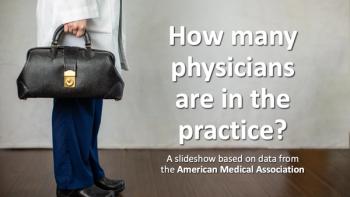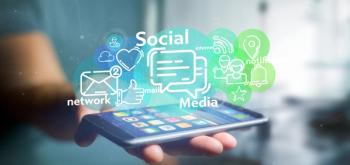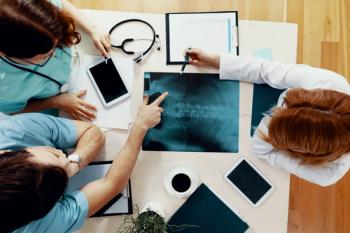
Advances in Telehealth for Diabetes Care
Experts in diabetes discuss the transition to telemedicine during the COVID-19 pandemic and its impact on diabetes care.
Episodes in this series

Transcript:
Dhiren Patel, PharmD, CDE, BC-ADM, BCACP: I would love your thoughts on how diabetes technology has impacted this past year and a half. I know it hasn’t been easy for us, it hasn’t been easy for our patients, but I really think this diabetes technology allowed us to continue to provide care. When you look at other specialties and you see screenings that are down and routine care that was skipped during this COVID-19 pandemic, you could argue that diabetes in many cases didn’t skip a beat because we had the ability to remotely monitor our patients.
Thus, I would love to learn how you managed COVID-19. What worked, what didn’t work, and what does the new normal look like, if that is even a term now? Dr Busch, we’ll talk about you first. You have a very busy practice, a lot of patients. How did you use some of this diabetes technology to get you through the COVID-19 pandemic, and what is that looking like now as things start to reopen?
Robert Busch, MD: Patients were used to the remote monitoring with phone calls, either from us or from a certified educator. Fortunately, because our clinic was not attached to the hospital, patients felt more comfortable coming in versus thinking they’re going to walk in a hospital door and get COVID-19 walking in the entrance. Thus, we weren’t affected as much by that, other than the usual masks and everything else. However, the remote monitoring was extremely helpful, so you could still have continuous visits with your patients without much interruption and have that kind of a visit. Obviously, it was a lot nicer to see the patient in the office and have that personal touch, but that was a great segue. Some people wanted to continue that maybe for every other visit, especially with the educator, so a lot of that was remote with the educator. Obviously, you can’t take their blood pressure remotely. I still want to examine the patients, but it helped a great deal in terms of the monitoring and adjustments.
Dhiren Patel, PharmD, CDE, BC-ADM, BCACP: What are you seeing now as there is some appetite for remote visits, where some patients still prefer that or they’re hesitant to come back in? What are you seeing now, are you seeing a hybrid model, or are you seeing back to what it was pre-pandemic?
Robert Busch, MD: We have almost 99% back to where it was.
Dhiren Patel, PharmD, CDE, BC-ADM, BCACP: Wow, OK.
Robert Busch, MD: However, I think it is because we’re freestanding and not in a hospital setting, so I don’t know for sure. For my colleagues who work in a hospital, maybe patients are a little more gun-shy walking into a hospital. They think maybe a regular, freestanding office wasn’t touched by COVID-19 and only the hospital was because that’s where the inpatients are. But we’re back to normal, back to normal plus some.
Dhiren Patel, PharmD, CDE, BC-ADM, BCACP:Wow, OK.
Diana Isaacs, PharmD, BCPS, BCACP, BC-ADM, CDCES: Fascinating. Yes, we are very much a hybrid model, so we were doing virtual care before the pandemic. However, it exploded in terms of the volume. We found patients really like it for the convenience. Even ones who live nearby, just not having to take off work, and the convenience of doing an appointment over lunch. But we also have a number of people far away, in different states, who we’re taking care of. Thus, I would say the virtual care is going to continue to be a hybrid.
Also, with all of this technology, we have connected apps now as well. With the smart pens, with the insulin pumps, with the CGM [continuous glucose monitoring], almost all of them have the connected apps. Furthermore, it’s so much easier now to see the data, and that’s one of the reasons I like putting people on smart pens as well because they can send me the report, or I can log in and look at their report. It makes taking care of them virtually a very smooth process.
Dhiren Patel, PharmD, CDE, BC-ADM, BCACP: Yes, I would agree. I think we took the best of both worlds. I’m more where you are, Dr Isaacs, where I think it’s going to be a hybrid model. Some patients don’t want to travel the distance. They are thinking, “Hey, this is good, I don’t have to take off a half a day to get the care that I wanted.” Thus, I think it has also helped overcome some of those barriers that we previously saw in receiving care. I think it’s great. I think this technology is going to continue to help patients, for ATPs [assistive technology professionals] and for us to be able to more effectively monitor our patients.
Transcript edited for clarity.
Newsletter
Stay informed and empowered with Medical Economics enewsletter, delivering expert insights, financial strategies, practice management tips and technology trends — tailored for today’s physicians.












